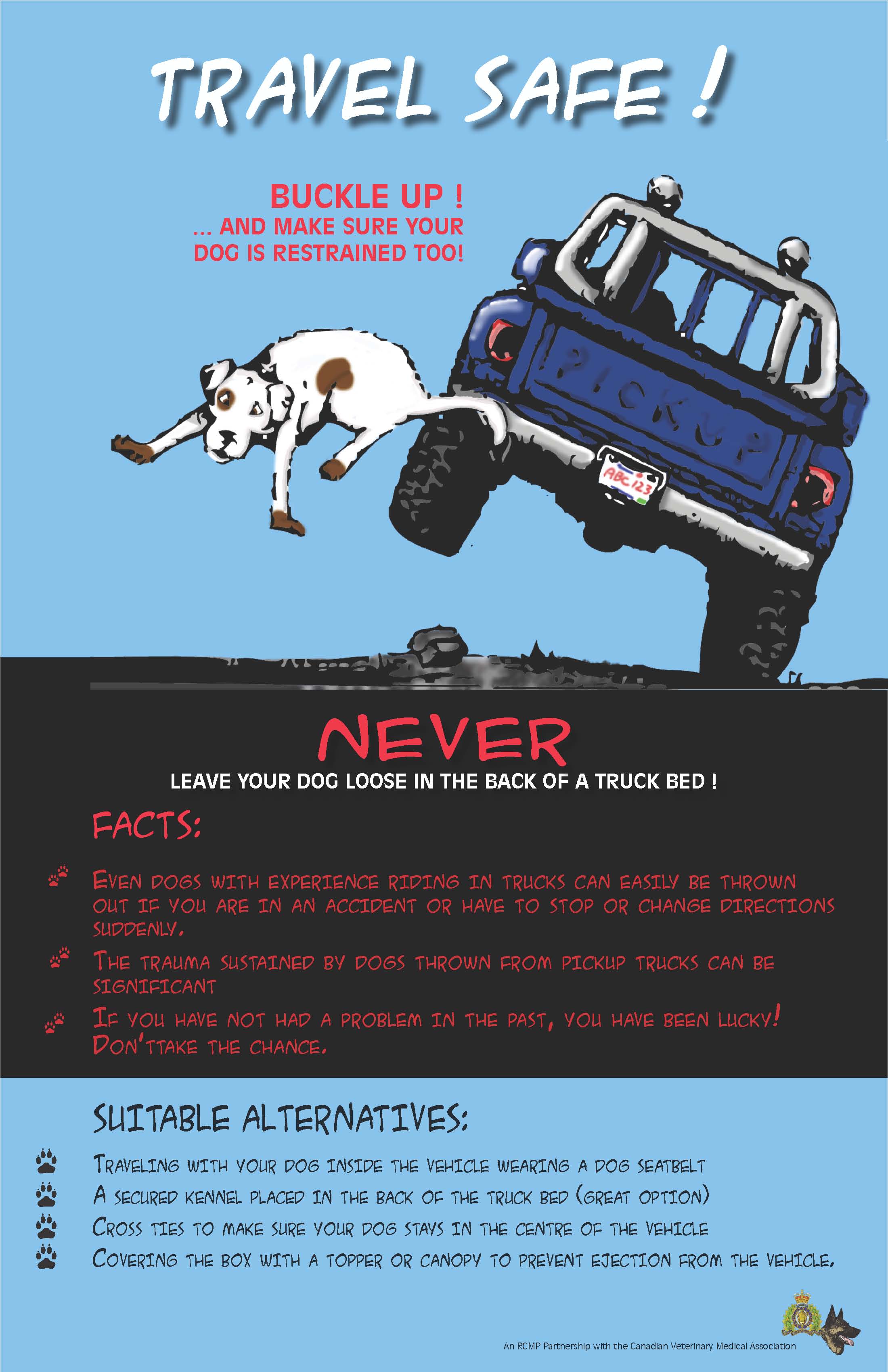A number of concerned members of the veterinary community have come together to remind pet owners to make sure their animals travel in a safe manner when in a vehicle.
In 2008 the group launched a safety campaign when it comes to animals in vehicles in hopes of educating the public. Cindy Nowle and Laurel Arvidson, veterinarians with Lacombe Veterinary Centre, promoting the campaign said their hope is to remind pet owners to make sure their animals are secured safely inside a vehicle as well as in a truck box.
“If you have your little dog sitting on your lap, what if you slam your brakes on? You could kill your little dog and people don’t think about that,” said Nowle.
The campaign stems from dogs coming into Nowle and Arvidson’s veterinary clinic who had come out of the back of a vehicle.
“They are typically hurt quite badly. Most of the time they are fracturing a femur which usually means a big surgery, or they will get run over by the car behind them. They rarely make it out of there without being pretty badly injured,” said Nowle. “It is preventable and it is no fault of their own (the dog).”
Nowle added a seatbelt, which are like a harness, is a great way to make sure dogs or cats are safe and secure in a vehicle. As well, owners can secure their dog or cat in a kennel in their vehicle as well. “Those grates also work well so the dogs or cats are secured in the back of a vehicle. They can’t climb on top of you.
“What we wanted to do was to consider vehicle safety as a whole,” Nowle said, adding that animals should always be in the back seat of a vehicle as opposed to the front.
As for dogs in the back of truck boxes, Nowle said there are safe ways to transport them as well. “You can put a canopy on your truck where your dog is secured in there. You can also put your dog in a secure ventilated kennel in the back and we see that a lot. People use bungee cords to hold it in place and some even bolt the kennel to the box,” she said. “You can also cross-tie your dog where you tie them on each side and they can stand up and lay down but they can’t turn around and they can’t fall out.”
Nowle added it is especially important to get the message out in Central Alberta because there is a high population of pick up trucks in the area.
Nowle and Arvidson took the campaign to the Alberta Veterinary Association and they sent out two copies of the campaign’s poster to every vet clinic in the province. The Canadian Veterinary Association also got wind of the campaign and made a French version of the poster as well.
Ultimately, the hope is that the campaign will someday become law. “We are pushing as a group to try and turn this into a provincial law,” said Nowle.
There is a bylaw in place in Red Deer that was put into place in 2009 that prohibits dogs in the back of trucks while the vehicle is moving. An owner can receive a fine if a dog is not secured in the back of a truck box.
Meanwhile, drivers who allow their animals to roam in their vehicle – whether it be inside or in a truck box – can also be charged under the Traffic Safety Act in Section 115 2i.
“Basically it says that if you allow anybody in the vehicle or an animal in the vehicle to impede your free and interrupted access to your steering wheel, brakes and other equipment, that is against the law and that holds a $172 fine,” said Cpl. Matt LaBelle of the Red Deer RCMP.
Another section under the Traffic Safety Act (Section 115 2j) where pet owners can also be charged states that the driver of a vehicle who permits any person, animal, or thing in the vehicle to cause any obstruction to the driver’s clear vision in any direction. This also carries a $172 fine.
“When you think practically about a dog on a lap, obviously that is a big no-no. We would definitely be pulling over someone when we see them doing that. There are obviously safer methods to transport your animal inside your vehicle and we encourage that,” said LaBelle.
efawcett@reddeerexpress.com



